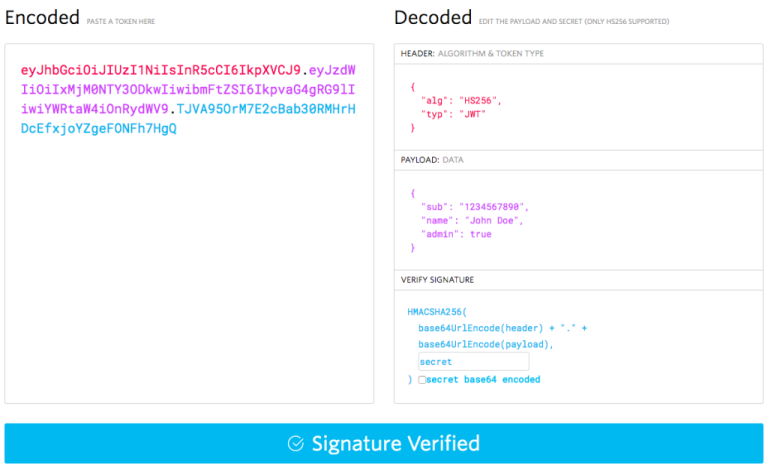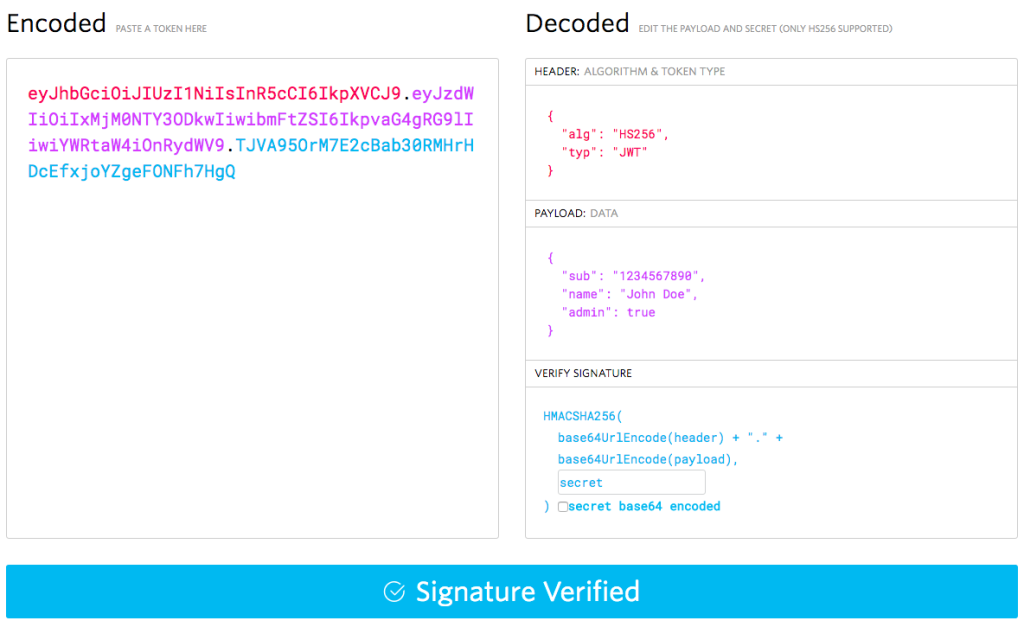Securing Your IoT Devices and Services with JSON Web Tokens

Key Takeaways
- JSON Web Tokens (JWTs) are a key tool for securing IoT devices and services, as they provide a secure way to verify that communications between devices and servers come from a trusted source. They can also function as bearer and access tokens.
- JWTs are beneficial in the IoT world due to their minimal overhead. They use a simple JSON scheme and base64 encoding to keep the HTTP calls made by small IoT devices as compact as possible. Furthermore, JWTs are universal and backed by a web standard, making them easily integrated with other web standards-compliant services.
- JWTs can be used in IoT architecture in various ways. For devices that simply need to receive a JWT as a bearer token, the JWT can be stored on the device and sent with every authenticated request. For devices that need to use the payload or issue their own JWTs, the device must be capable of JSON parsing/stringification, base64 encoding/decoding, and HS256 signature verification.
- When implementing JWTs in IoT architecture, it is crucial to always verify the signature when a server receives a request with a token. It is also recommended to use and enforce the expiry field to ensure compromised tokens eventually expire. The JSON Token ID (JTI) claim can also be used to actively revoke a token.

It’s IoT Week at SitePoint! All week we’re publishing articles focused on the intersection of the internet and the physical world, so keep checking the IoT tag for the latest updates.
IoT security is a hot-button issue in today’s world: there are more internet-connected devices than there are people, and the amount of data being shared has exploded over the past few years. However, keeping that data safe is becoming a problem just as quickly— especially with the advent of health-sensitive devices, and devices that could be dangerous if compromised, like vehicles!
I can’t claim to have all the answers, but I do have one trick up my sleeve that should help you in your quest for security — JSON Web Tokens, which I’ll also refer to as JWTs. These small, portable, verifiable tokens help make sure the communications you are sending and receiving from your devices and servers are from a trusted source. They also make great bearer and access tokens.
What’s a JSON Web Token?
For those who haven’t come across these before, JSON Web Tokens are JSON-based tokens used to send verified information across the web. They are base64 encoded before they are sent, so they tend to look like this:

What you are seeing above is the JWT debugger at JWT.io, a site where you can learn a lot more about JWTs than we’ll have room to go over in this article. On the left is the encoded, completed JWT. It includes:
- The header, base64 encoded, concatenated with a ‘.’
- The payload, base64 encoded, with another ‘.’
- The signed key
On the right is the decoded header and payload. They consist of claims (which is just a fancy name for JSON key-value pairs). Some claims are declared by the standard — "alg" is for the signing algorithm for the key and "sub" stands for subscriber. Other claims you make yourself, such as "admin".
The key consists of a signed hash of the header, concatenated with a ".", then the payload, all base64 encoded. It is signed with a secret that is to be held by both parties, and can be symmetrical (a string) or asymmetrical (an RSA public/private key pair).
These claims come together to describe the token itself and anything else you’d like to keep such as user information and relevant session data. Just be sure to keep this data limited — one of the big benefits of JWTs is they are very small if you don’t overstuff them!
You send JWTs by putting them in the Authorization HTTP header with the format:
Authorization: bearer <token>If you can’t modify HTTP headers, many services will also accept the JWT as a body parameter, or even a query parameter. Those methods aren’t recommended if you can use HTTP headers.
What Are The Benefits of JWTs?
The IoT world is a world of small devices, and developers strive to make the HTTP calls these devices make as small as possible. JWTs help with this by having very little overhead. They use the minimalistic JSON scheme and base64 encoding to achieve this. Just make sure you don’t add too many claims of your own, or else the benefit of size will overridden by your usage of them! Keep the claims to a minimum to keep your app functioning.
Why not cookies? This also hearkens to the HTTP request need. Instead of your server having to use the cookie to go find other information about the user’s session, it is all inside the JWT from the start. This means there are no extra database or external service calls to make. Again, this depends on how you use them, so think carefully about what claims you need, and which you don’t.
Another benefit of JWTs is that they are universal — JSON parsers exist for nearly every platform, and the ability to access base64 encoding/decoding along with hsa256 signing and verification is becoming more and more of a given. Also, JWTs are backed by a web standard, so you can be confident knowing you are using tech that can easily integrate with other web standards-compliant services, including many OAuth2 providers and all providers of the OpenID Connect standard.
Even if your IoT device cannot decode the token, it can be handed to the device as an access token for your servers and services. As long as your device can store a string given to it, JWTs can be used as a stored credential by your IoT devices. Just be extra sure to secure these tokens and keep a close eye on them, as bearer tokens can be dangerous if leaked!
One of the many challenges of today’s web architecture is validating yourself across services scattered across multiple domains — even a single hobbyist or company might have services running on different PaaS providers! JWTs make this cross-domain negotiation easier — as long as all parties share the same secret to verify the key, then the JWT doesn’t care about domain, subdomain, port, etc.
What About Encryption?
One of the first things I hear when I explain JWTs is “the data’s encoded, but I need it to be encrypted, otherwise my data’s out there for all to see!” Worry not — there is JSON Web Encryption, handled by RFC 7517, that allows you to encrypt your JSON Web Tokens and still participate in standards compliance! There are even plenty of libraries out there that support it. I’ve also seen it go under the name JOSE (Javascript Object Signing and Encryption).
Using JWTs In IoT Architecture
Now, we get to the good part — the how. We’ll take a look at this from the perspective of your IoT device and then your IoT servers.
Using JWTs on IoT Devices
If you simply want to receive a JWT as a bearer token, and not use the contained information, all you have to do is store the JWT you receive from your server on the device, and send it with every authenticated request.
If you want to use the payload, or have your device issue JWTs of its own, your device will need to be capable of:
- JSON parsing/stringification
- base64 encoding/decoding
- HS256 signature verification
It will also need to store the shared secret that the server will use to sign/verify the JWTs.
Once you receive a token, you then follow these steps:
- Verify the signature of the key with the secret stored on the device.
- If the signature is valid, use base64 decoding to get the stringified JSON payload.
- Parse the payload into an object.
And there you have it! For Arduino fans, there are some libraries out there for base64 encoding/decoding, HS256 verification, and JSON object handling. For platforms like Raspberry Pi that run Linux, you can use many different scripting languages (Python, Ruby, Node.js) to handle JWTs, and the JWT.io website outlines several SDKs available for your use.
Using JWTs on IoT Servers
As I mentioned in the device section, you can use the SDKs mentioned on the JWT.io website to control how you handle JWT verification on your server.
For instance, if you use Node.js and Express, there is the express-jwt middleware available that will prevent users or devices from accessing routes without a verified JWT.
Now that we’ve covered using JWTs in practice, let’s talk about some rules of thumb to keep in mind while using JWTs in your IoT architecture.
Some General Advice with JWTs
These are bits and pieces of learning I’ve picked up over my time using JWTs, and some of them are a bit of common sense. But they’re good to keep in mind when implementing JWTs in your architecture.
Always Verify The Signature
When your server receives a request with a token, always verify that signature, or you lose the main value of using a JWT in the first place — knowing the sender is who they say they are!
Use (and Enforce) The Expiry Field
In the standards, the iat field is for the time the token was issued at, and the exp field is the timestamp the token expires at. It is highly recommended that you use and enforce these two fields — especially if you have sensitive information. That way, eventually if a token does get out, it will expire.
How the id Field Can Be Very Handy
Waiting for a compromised token to expire is one thing, but being able to actively revoke a token is also helpful. The JTI (JSON Token ID) claim can help with this — you can revoke access to particular IDs instead of changing the secret and revoking all tokens at once! Just make sure your JTIs are highly collision-resistant, as with any GUID.
Conclusion
Thanks for sticking with me and learning about how you can secure your IoT devices with JSON Web Tokens!
Frequently Asked Questions (FAQs) on Securing IoT Devices and Services with JSON Web Tokens
What is the role of JSON Web Tokens (JWT) in IoT security?
JSON Web Tokens (JWT) play a crucial role in IoT security. They are used to securely transmit information between parties as a JSON object. This information can be verified and trusted because it is digitally signed. JWTs can be signed using a secret or a public/private key pair. In the context of IoT, JWTs can be used to authenticate devices and services, ensuring that only authorized devices can connect and interact with the IoT network.
How does JWT authentication work in IoT?
JWT authentication in IoT works by issuing a token to a device after it has been authenticated. This token is then used for subsequent communications. The token contains a payload, which includes information about the device and the user. The payload is encoded and signed, ensuring its integrity and authenticity. When the device sends a request, it includes the JWT in the header. The server then verifies the token and processes the request if the token is valid.
What are the benefits of using JWT for IoT security?
Using JWT for IoT security offers several benefits. Firstly, it provides a robust and secure method for authenticating devices and services. Secondly, it reduces the need for storing sensitive information on the server, as the token contains all the necessary information. Thirdly, it simplifies the authentication process, as the server only needs to verify the token instead of having to authenticate the device every time. Lastly, JWTs are compact and URL-safe, making them suitable for use in IoT where bandwidth and storage may be limited.
How can I implement JWT authentication in my IoT network?
Implementing JWT authentication in your IoT network involves several steps. Firstly, you need to set up a server that can issue and verify JWTs. This server will authenticate devices and issue them with a token. Secondly, you need to configure your devices to send the JWT in the header of their requests. Lastly, you need to ensure that your server verifies the token before processing any requests.
What are the potential risks of using JWT for IoT security?
While JWT offers many benefits for IoT security, there are also potential risks. If a JWT is intercepted, it can be used to gain unauthorized access to the IoT network. Therefore, it is crucial to secure the transmission of JWTs, for example, by using HTTPS. Additionally, if the secret key used to sign the JWT is compromised, it can be used to create fake tokens. Therefore, it is important to protect the secret key and rotate it regularly.
How can I secure the transmission of JWTs in my IoT network?
Securing the transmission of JWTs in your IoT network can be achieved by using secure communication protocols such as HTTPS or TLS. These protocols encrypt the data during transmission, preventing it from being intercepted and read by unauthorized parties.
How can I protect the secret key used to sign the JWTs?
Protecting the secret key used to sign the JWTs can be achieved by storing it securely and rotating it regularly. The key should be stored in a secure location, such as a hardware security module (HSM), and should not be hard-coded into the application. Regularly rotating the key reduces the risk of it being compromised.
Can I use JWTs for device-to-device communication in my IoT network?
Yes, JWTs can be used for device-to-device communication in an IoT network. Each device would be issued a JWT, which it would include in the header of its requests to other devices. The receiving device would then verify the JWT before processing the request.
What should I include in the payload of the JWT?
The payload of the JWT should include information about the device and the user. This could include the device ID, the user ID, the issued at time (iat), and the expiration time (exp). The payload can also include claims, which are statements about the device or user.
How can I handle token expiration in my IoT network?
Handling token expiration in your IoT network can be achieved by implementing a refresh token system. When the JWT expires, the device can request a new token using a refresh token. The server would verify the refresh token and issue a new JWT. This ensures that the device remains authenticated even if the original JWT expires.
Kassandra is a Developer Evangelist for Auth0, an Electrical Engineering student, crafter, and Austinite. They really like javascript, robots, and light-up clothing.




